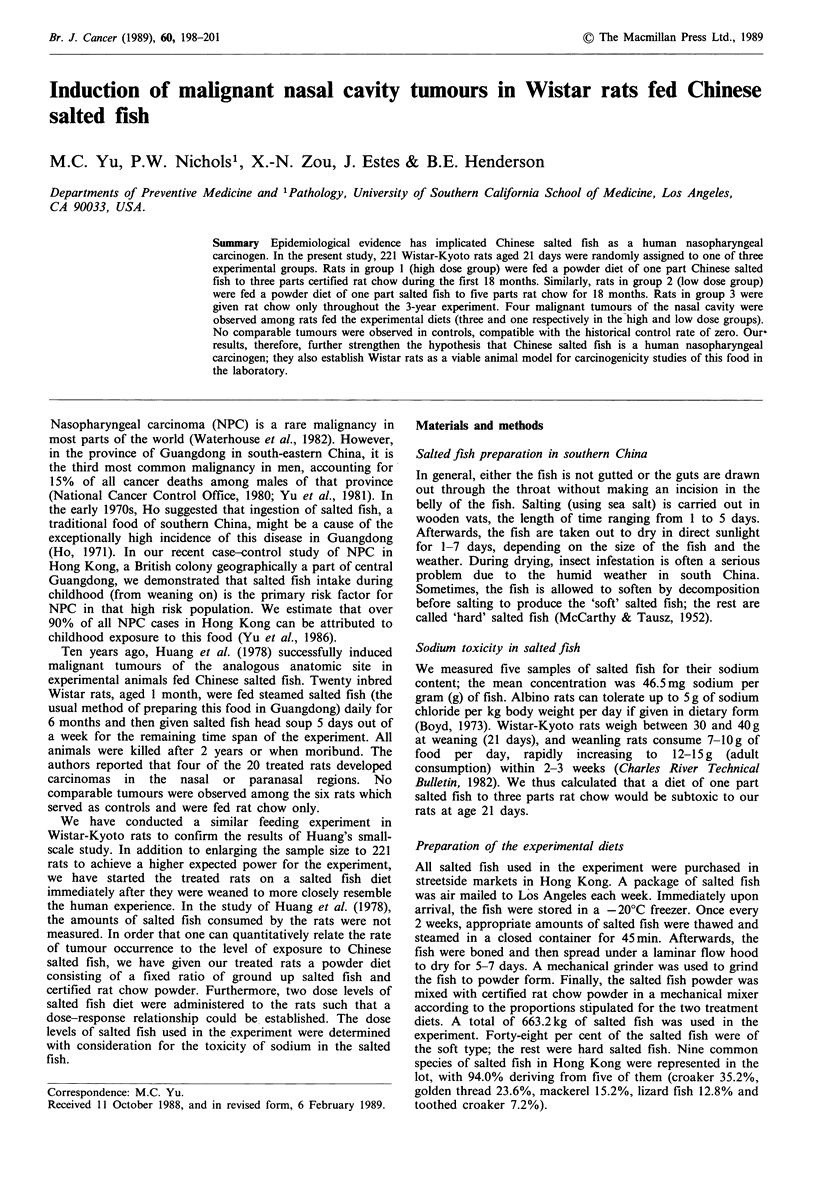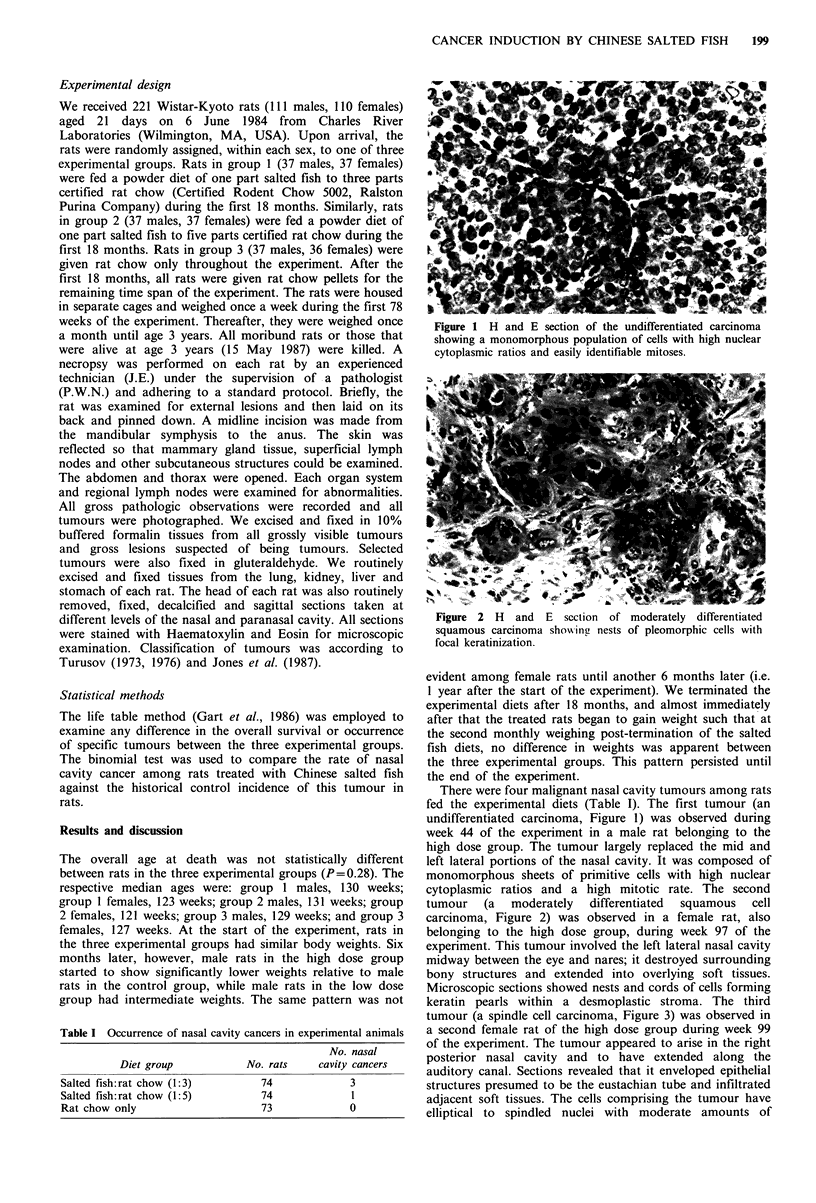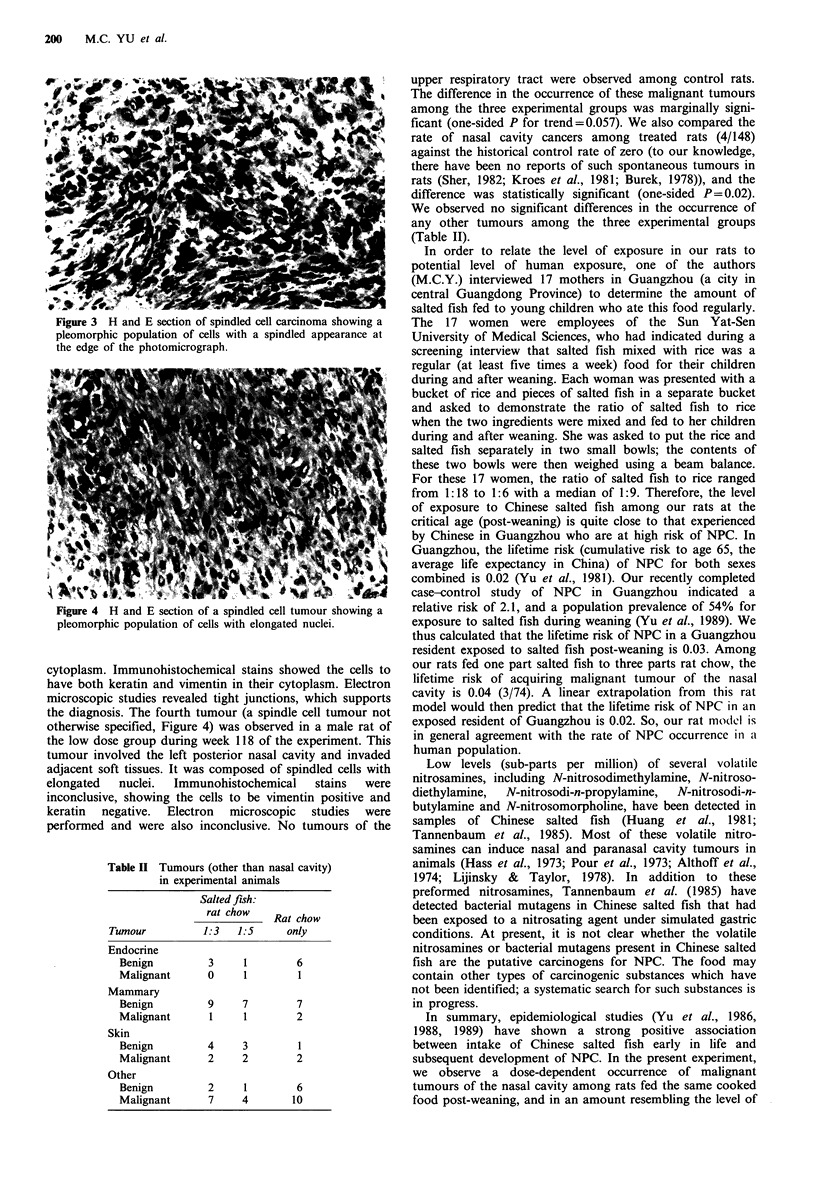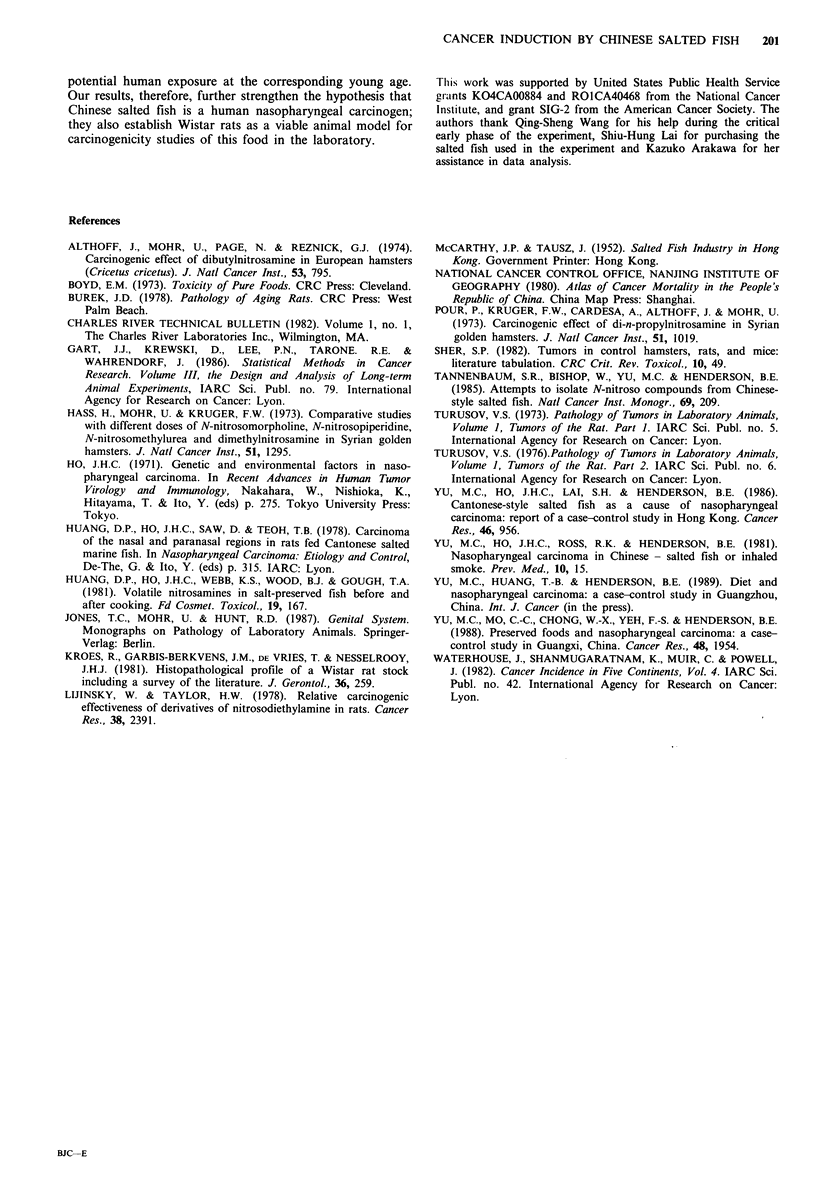Abstract
Epidemiological evidence has implicated Chinese salted fish as a human nasopharyngeal carcinogen. In the present study, 221 Wistar-Kyoto rats aged 21 days were randomly assigned to one of three experimental groups. Rats in group 1 (high dose group) were fed a powder diet of one part Chinese salted fish to three parts certified rat chow during the first 18 months. Similarly, rats in group 2 (low dose group) were fed a powder diet of one part salted fish to five parts rat chow for 18 months. Rats in group 3 were given rat chow only throughout the 3-year experiment. Four malignant tumours of the nasal cavity were observed among rats fed the experimental diets (three and one respectively in the high and low dose groups). No comparable tumours were observed in controls, compatible with the historical control rate of zero. Our results, therefore, further strengthen the hypothesis that Chinese salted fish is a human nasopharyngeal carcinogen; they also establish Wistar rats as a viable animal model for carcinogenicity studies of this food in the laboratory.
Full text
PDF



Images in this article
Selected References
These references are in PubMed. This may not be the complete list of references from this article.
- Althoff J., Mohr U., Page N., Reznik G. Carcinogenic effect of dibutylnitrosamine in European hamsters (Cricetus cricetus). J Natl Cancer Inst. 1974 Sep;53(3):795–800. doi: 10.1093/jnci/53.3.795. [DOI] [PubMed] [Google Scholar]
- Haas H., Mohr U., Krüger F. W. Comparative studies with different doses of N-nitrosomorpholine, N-nitrosopiperidine, N-nitrosomethylurea, and dimethylnitrosamine in Syrian golden hamsters. J Natl Cancer Inst. 1973 Oct;51(4):1295–1301. doi: 10.1093/jnci/51.4.1295. [DOI] [PubMed] [Google Scholar]
- Huang D. P., Ho J. H., Saw D., Teoh T. B. Carcinoma of the nasal and paranasal regions in rats fed Cantonese salted marine fish. IARC Sci Publ. 1978;(20):315–328. [PubMed] [Google Scholar]
- Huang D. P., Ho J. H., Webb K. S., Wood B. J., Gough T. A. Volatile nitrosamines in salt-preserved fish before and after cooking. Food Cosmet Toxicol. 1981 Apr;19(2):167–171. doi: 10.1016/0015-6264(81)90353-9. [DOI] [PubMed] [Google Scholar]
- Kroes R., Garbis-Berkvens J. M., de Vries T., van Nesselrooy H. J. Histopathological profile of a Wistar rat stock including a survey of the literature. J Gerontol. 1981 May;36(3):259–279. doi: 10.1093/geronj/36.3.259. [DOI] [PubMed] [Google Scholar]
- Lijinsky W., Taylor H. W. Relative carcinogenic effectiveness of derivatives of nitrosodiethylamine in rats. Cancer Res. 1978 Aug;38(8):2391–2394. [PubMed] [Google Scholar]
- Pour P., Krüger F. W., Cardesa A., Althoff J., Mohr U. Carcinogenic effect of di-n-propylnitrosamine in Syrian golden hamsters. J Natl Cancer Inst. 1973 Sep;51(3):1019–1027. doi: 10.1093/jnci/51.3.1019. [DOI] [PubMed] [Google Scholar]
- Sher S. P. Tumors in control hamsters, rats, and mice: literature tabulation. Crit Rev Toxicol. 1982 Mar;10(1):49–79. doi: 10.3109/10408448209033631. [DOI] [PubMed] [Google Scholar]
- Tannenbaum S. R., Bishop W., Yu M. C., Henderson B. E. Attempts to isolate N-nitroso compounds from Chinese-style salted fish. Natl Cancer Inst Monogr. 1985 Dec;69:209–211. [PubMed] [Google Scholar]
- Yu M. C., Ho J. H., Lai S. H., Henderson B. E. Cantonese-style salted fish as a cause of nasopharyngeal carcinoma: report of a case-control study in Hong Kong. Cancer Res. 1986 Feb;46(2):956–961. [PubMed] [Google Scholar]
- Yu M. C., Ho J. H., Ross R. K., Henderson B. E. Nasopharyngeal carcinoma in Chinese---salted fish or inhaled smoke? Prev Med. 1981 Jan;10(1):15–24. doi: 10.1016/0091-7435(81)90002-5. [DOI] [PubMed] [Google Scholar]
- Yu M. C., Mo C. C., Chong W. X., Yeh F. S., Henderson B. E. Preserved foods and nasopharyngeal carcinoma: a case-control study in Guangxi, China. Cancer Res. 1988 Apr 1;48(7):1954–1959. [PubMed] [Google Scholar]






